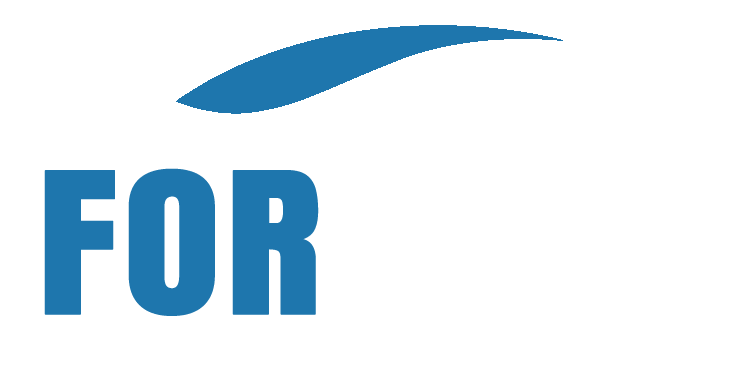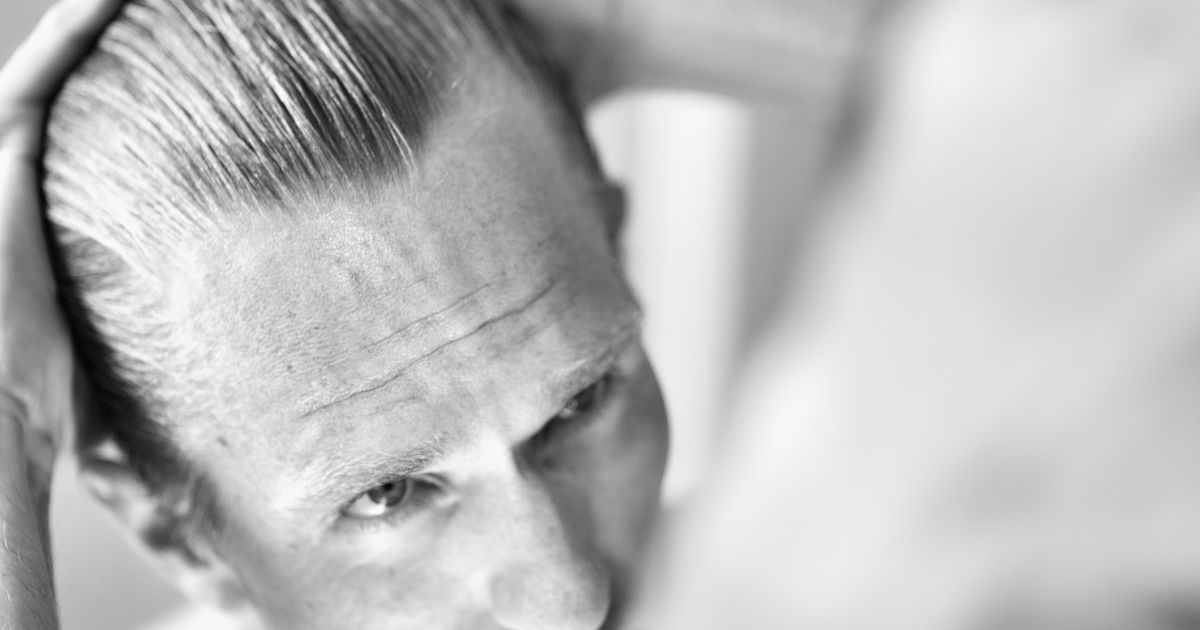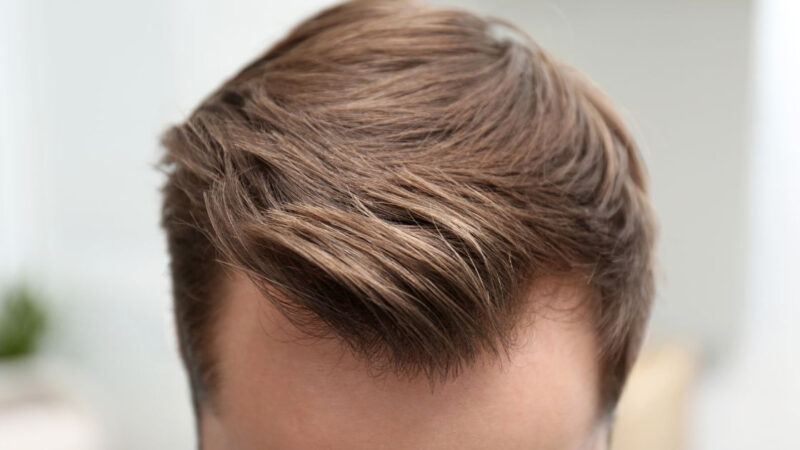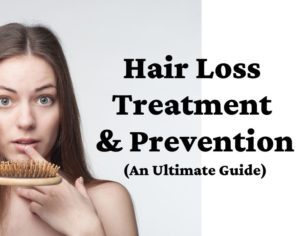Receding hairline is a common condition that affects both men and women, although it is more prevalent in men to notice early receding hairline signs. It is characterized by gradual hair thinning around the forehead and temples, which can eventually lead to baldness.
While some people may consider receding hairline as a natural part of aging, it can be a source of emotional distress and affect one’s self-esteem and confidence. Therefore, it is essential to spot receding hairline signs early and take appropriate measures to prevent pattern hair loss.
This article will discuss the signs and symptoms of receding hairline, its contributing factors, and prevention and treatment options.
We will also address the psychological and emotional impact of receding hairline and provide coping strategies to help people manage the condition.
Understanding Receding Hairline
Receding hairline refers to a common condition where hair gradually thins around the forehead and temples, leading to baldness in severe cases. It affects both males and females and can be caused by several factors, including genetics or family history, hormonal imbalances, stress, poor nutrition, smoking, and excessive alcohol consumption.
Genetics plays a significant role in receding hairline. You can acquire hereditary hair loss from either parent. Hormonal imbalances can cause hair fall, particularly in men, due to converting testosterone to dihydrotestosterone (DHT), which damages hair follicles.
Other contributing factors, such as environmental and lifestyle factors, can make sustaining healthier hair more challenging.
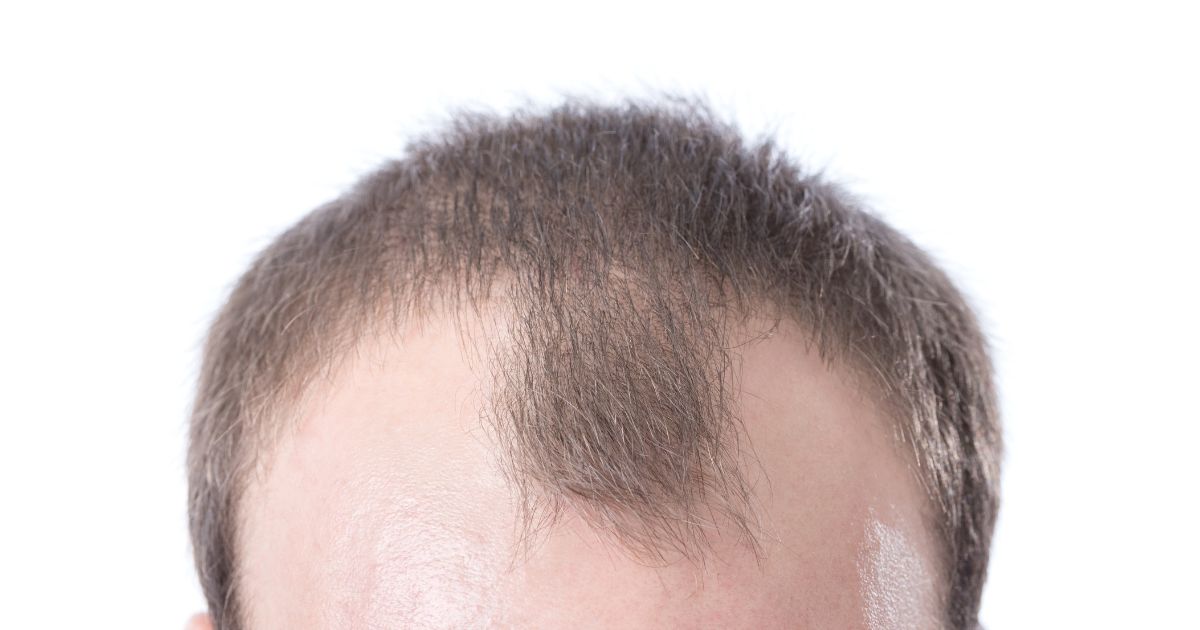
Difference between the receding hairline and hair loss
It’s essential to understand the difference between receding hairline and hair loss, as they are two different conditions.
Receding hairline is the gradual thinning of hair around the forehead and temples, which can eventually lead to baldness in severe cases. It’s a common condition that affects both men and women and is primarily caused by genetics and hormonal imbalances.
In contrast, hair loss can occur in different patterns and can be caused by several factors, such as medical conditions, medications, and hair styling practices. While both conditions can be distressing, it’s important to distinguish between them and seek appropriate hair loss treatments.
Common myths and misconceptions about receding hairlines
Several myths and misconceptions about receding hairlines can cause confusion and anxiety. One common misconception is that tight hairstyles or wearing hats can cause a receding hairline or hair loss. However, wearing hats does not directly cause hair loss, although it can lead to hair breakage if the hat is too tight or if the hair is pulled back too tightly.
Another myth is that receding hairline only affects men, but this is not true, as women can also experience shedding hair around the forehead and temples. Additionally, there is no one-size-fits-all solution for shedding hairlines; what works for one person may not work for another.
It’s important to separate fact from fiction and seek advice from a qualified healthcare professional.
Signs and Symptoms of Receding Hairlines
Spotting the early signs of thinning hairlines is crucial to prevent further hair loss and take appropriate measures. The first sign of a thinning hairline is usually the formation of a “widow’s peak” or thinning hair around the forehead and temples.
Other signs can include receding hairlines that appear to be moving back, making the forehead look larger. Additionally, looking at old photographs and comparing them to your current appearance can help you spot the early signs of receding hairlines.
If you’re unsure, it’s best to seek advice from a qualified healthcare professional that can assess your condition and provide appropriate hair regrowth treatment options.
Physical Receding Hairline Signs
Thinning hair, widows peak, and bald spots are all signs of shedding hairlines that you shouldn’t ignore. Thinning hair refers to hair that is gradually becoming less dense, which several factors, such as genetics, hormonal imbalances, and environmental factors, can cause.
A “widow’s peak” refers to the V-shaped hair growth around the forehead, which can become more prominent as hair thins around the temples. On the other hand, bald spots are patches of hair loss on the scalp that various factors can cause.
If you’re experiencing any of these signs or are unsure if you’re experiencing frontal fibrosing alopecia, male pattern baldness, etc., it’s best to seek advice from a healthcare professional.
Seeking professional advice can help you determine the underlying cause and provide appropriate treatment options.
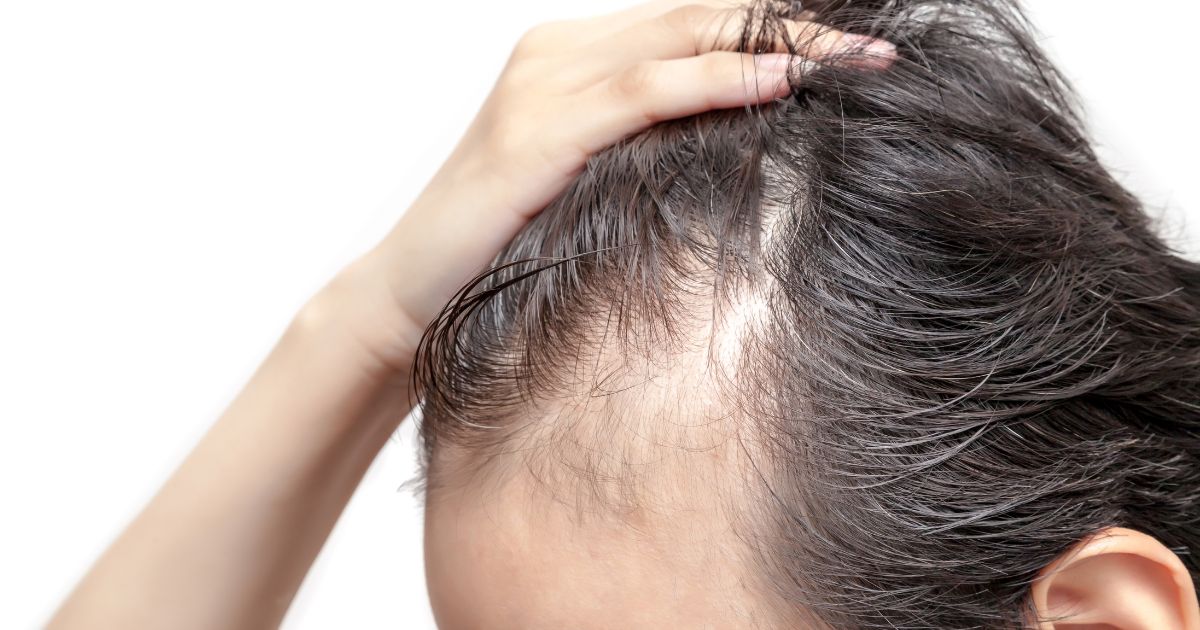
Emotional and Psychological Signs
Receding hairlines can also have emotional and psychological effects, which should not be overlooked. Anxiety, depression, and low self-esteem are common emotional and psychological signs of receding hairlines.
These conditions can occur due to the impact of receding hairline on appearance and self-image, leading to feelings of shame, embarrassment, and social isolation. Such conditions can be challenging and significantly impact the overall quality of life.
Seeking support from healthcare professionals or support groups can be beneficial in managing the emotional and psychological signs of a receding hairline. Addressing these emotional and psychological signs is essential for overall health and well-being.
Factors Contributing to Receding Hairlines
It is important to be aware of the factors contributing to receding hairline. By knowing them, you will also know the type of treatment that will best address the problem.
Genetic Factors
Genetic factors play a significant role in receding hairline. If a close family member, such as a parent or grandparent, has experienced hair loss or hair shedding, it’s more likely that you will also experience the same.
Genetic factors contributing to receding hairlines are complex and involve multiple genes. However, the primary gene responsible for male pattern hair loss is on the X chromosome, inherited from the mother’s side of the family.
Hormonal Imbalance
Hormonal imbalances are also a common factor contributing to receding hairline. Testosterone, a male hormone, is converted to dihydrotestosterone (DHT) by an enzyme called 5-alpha-reductase. DHT causes hair follicles to shrink, leading to hair thinning and loss.
Hormonal imbalances can also exacerbate receding hairline in genetically predisposed individuals. Although you cannot modify genetic factors, healthy lifestyle changes and medical treatments can help manage receding hairline.
Hormonal imbalances can also occur due to medical conditions, such as thyroid disorders or polycystic ovary syndrome (PCOS), leading to hair thinning and loss in both men and women.
Addressing hormonal imbalances is essential in managing receding hairline caused by these factors. Medications, lifestyle changes, and hormone replacement therapy can help manage hormonal imbalances and prevent worsening hair loss.
Environmental Factors
Environmental factors, such as stress and poor nutrition, can also contribute to receding hairline. Chronic stress can cause hair to enter the telogen phase, where it stops growing and falls out prematurely, leading to thinning hair and receding hairline.
Poor nutrition, such as a diet lacking essential vitamins and minerals, can also impair new hair growth and lead to hair loss. Exposure to pollutants and toxins can also damage your hair follicles, affecting your overall hair health.
Managing environmental factors can help prevent further hair loss and promote healthy hair growth. Reducing stress through relaxation techniques, maintaining a healthy diet, and avoiding exposure to harmful chemicals can help reverse hair loss.

Lifestyle Factors
Lifestyle factors, such as smoking and excessive alcohol consumption, can also contribute to a thinning hairline. Smoking causes damage to hair follicles and blood vessels, reducing the blood supply to hair follicles and contributing to hair thinning and loss.
Excessive alcohol consumption can also affect hair growth-promoting effects by disrupting hormone levels and causing nutritional deficiencies. Other lifestyle factors, such as lack of exercise and poor sleep quality, can also contribute to hair loss.
Making lifestyle changes, such as quitting smoking, reducing alcohol consumption, and adopting a healthy lifestyle, can help prevent severe hair loss and promote healthy hair growth.
Prevention and Treatment of Receding Hairline
Making specific lifestyle changes work wonders in restoring hair growth. These include maintaining a healthy diet, exercising regularly, and adequate sleep, reducing stress, and avoiding harmful habits such as smoking and excessive alcohol consumption.
Eating a well-balanced diet rich in protein, vitamins, and minerals can help regrow hair. Regular exercise can improve blood circulation, delivering essential nutrients and oxygen to every hair follicle.
Sufficient sleep can help reduce stress levels and treat hair loss. Managing stress through relaxation techniques, such as meditation or yoga, is ideal for treating hair loss. These healthy lifestyle habits can help prevent pattern hair loss and promote overall well-being.
Medical Treatment
Medical treatments are also available for preventing receding hairline. Hair transplant involves removing hair follicles from a donor site and transplanting them to areas of hair loss.
FUE itself is a major innovation in hair transplantation industry. A technique that, ideally, involves extracting each follicle from the donor site, FUE is actually the first hair restoration method that minimizes scarring.
Hair transplantation before the method involved heavy scarring and long recovery times -Follicular Unit Transplantation (FUT) and Scalp Reduction both fit within this category. Such techniques bring paltry results as well. FUT and other older techniques lead to doll-like hair and unnatural appearing hairlines.

Natural Remedies and Supplements
In addition to medical treatments and natural remedies, supplements can help stimulate hair growth and prevent a receding hairline. Doing a scalp massage using essential oils, such as peppermint and lavender oil, has been shown to cause increased hair thickness.
Supplements like biotin, collagen, and vitamin D soothe scalp tissue, supporting hair density improvement. A healthy diet of essential vitamins and minerals can undoubtedly stimulate new hair follicles.
However, it is essential to note that natural remedies and supplements may not be as effective as medical treatments, and you must use them cautiously. The American Academy of Dermatology recommends consulting a healthcare professional before using any natural remedy or supplement.
On Early Prevention
Early intervention is critical in preventing losing more hair and promoting healthy growth. When you notice the signs of receding hairline earlier, it is easier to identify and address the underlying causes.
You can prevent severe hair loss and support healthy hair growth with the help of early intervention, lifestyle changes, medical treatments, and natural remedies. Delaying intervention can lead to irreversible hair loss and limited treatment options.
Moreover, a receding hairline can significantly impact one’s emotional and psychological well-being, leading to anxiety, depression, and low self-esteem. Early intervention can prevent these negative consequences and promote overall well-being. Therefore, you must seek professional help when you notice signs of pattern hair loss.
Coping with Receding Hairline
A receding hairline can significantly impact a person’s emotional and psychological well-being. Many people associate a full head of hair with youth, vitality, and attractiveness.
As a result, experiencing hair loss or receding hairline can lead to feelings of low self-esteem, depression, and anxiety. People may feel self-conscious about their appearance and worry about being perceived as less attractive or desirable.
The emotional and psychological impact of the receding hairline can also affect a person’s social and professional life. People may avoid social situations or interactions with others, leading to seclusion and isolation.
In a professional setting, gradual hair loss may impact one’s self-confidence, which can impact job performance and advancement opportunities.
Recognizing a receding hairline’s emotional and psychological impact is vital in addressing the issue. Seeking professional help and support can help individuals cope with hair loss’s emotional and psychological effects and promote overall well-being.
Coping Strategies
Coping with a type of hair loss can be challenging, but some strategies can help individuals manage their emotions and promote well-being. Acceptance is an important coping strategy that involves acknowledging the changes in one’s appearance and learning to love and accept oneself regardless of the changes.
Self-care is another critical coping strategy that involves taking care of oneself physically, emotionally, and mentally. This can include adequate sleep, eating a balanced diet, regular physical activities, and partaking in adventures that bring pleasure and refreshment.
Seeking professional help is also a valuable coping strategy. A board-certified dermatologist or hair specialist can provide medical treatments, such as hair transplantation or medication, to prevent severe hair loss and promote growth.
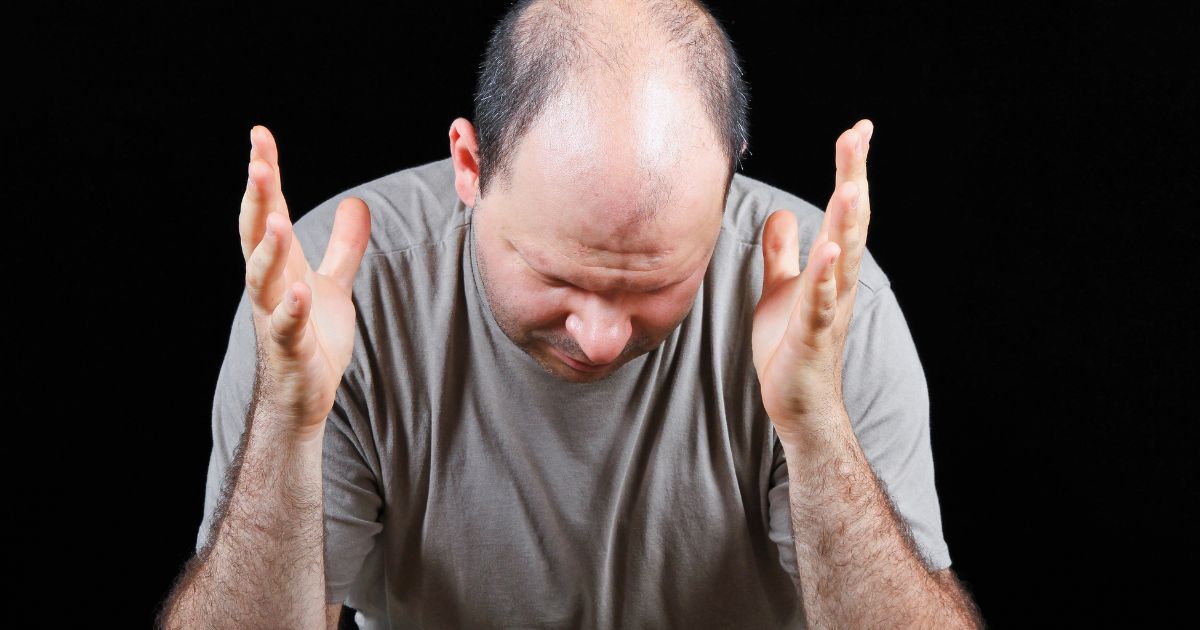
A therapist or counsellor can provide emotional support and help individuals cope with hair loss’s emotional and psychological impact. Overall, coping strategies can help individuals navigate the challenges of receding hairline and promote overall well-being.
Support systems and communities can be valuable resources for individuals experiencing shedding hairlines. These networks can provide emotional support, practical advice, and a sense of belonging to those navigating hair loss challenges.
One example of a support system is online communities dedicated to hair loss, such as forums or social media groups. These communities allow individuals to connect with others experiencing similar challenges, share their experiences, and offer support and advice.
Support groups or therapy groups can also be helpful resources for individuals experiencing emotional distress related to hair loss. These groups provide a safe and supportive environment where individuals can share their feelings, learn coping strategies, and receive emotional support.
Family and friends can also provide valuable support. Talking to loved ones about hair loss can help individuals feel understood and supported and provide practical help, such as accompanying them to medical appointments or helping with daily tasks.
Support systems and communities can help individuals with receding hairlines feel less isolated and more empowered to manage their hair loss and improve their overall well-being.
Final Thoughts
Conclusively, spotting the early and toxic signs of receding hairline is crucial in preventing permanent hair loss and managing the emotional and psychological impact of hair loss.
By understanding the causes and risk factors of receding hairline, individuals can take proactive steps to prevent or delay hair loss, such as making lifestyle changes, seeking medical treatments, or using natural remedies.
Developing coping strategies and seeking support from friends, family, or support groups can help individuals navigate the emotional challenges associated with hair loss.
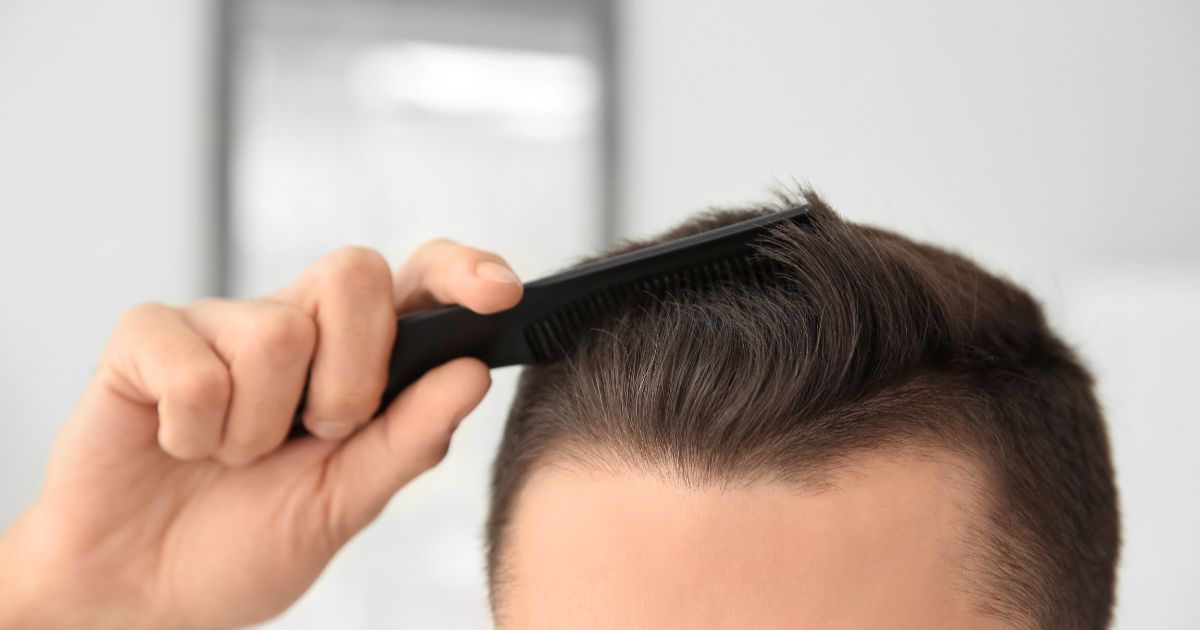
Individuals can improve their overall well-being and quality of life by taking action early on. So, if you notice any early receding hairline signs, don’t wait until it’s too late – take action and seek professional hair loss treatments today!
